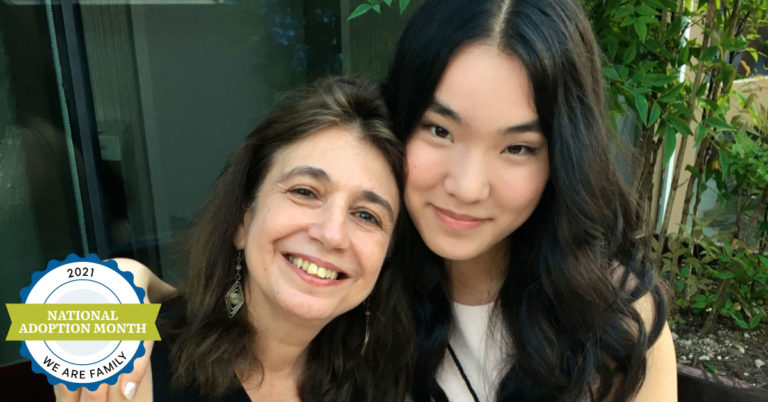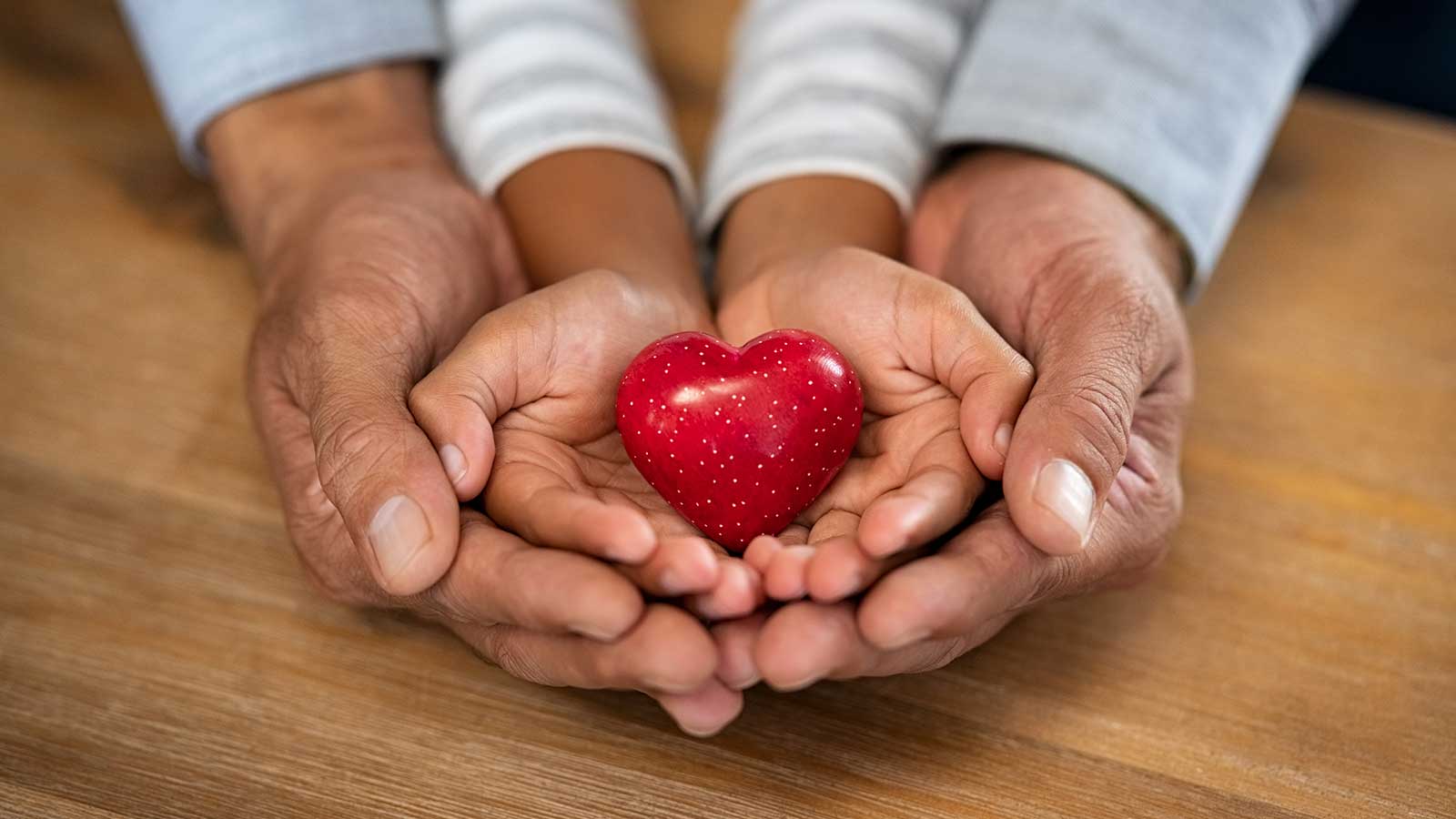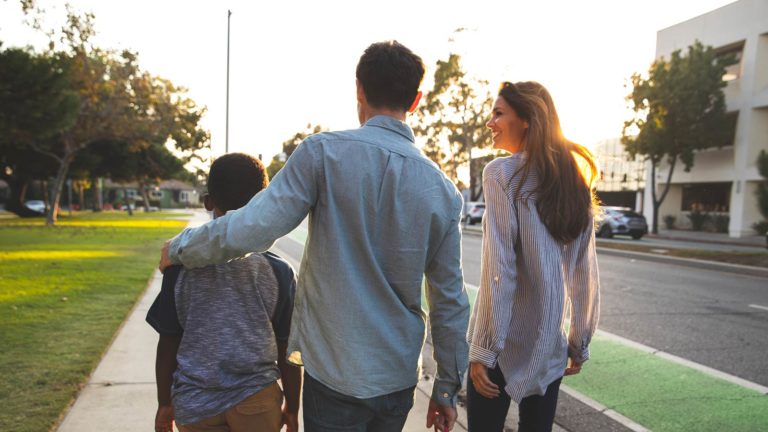Adoptive mom Laura Broadwell shares what she has learned about the complexities of transracial adoption in the more than 20 years since she adopted her daughter from China.
On the morning of July 7, 1999 — a day of lucky 7s — my life changed. After many months of waiting and nail-biting anticipation, I received a package in the mail containing my daughter’s referral photo. Before I knew it, I was one step closer to becoming a mother.
Du Xue Jing — as she was then named — was 7 months old at the time, but her little moon-shaped face, wise eyes and pouty lips already suggested that she and I would be great friends, a dynamic single-mother-and-daughter duo. At the age of 42, I felt humbled by the confidence instilled in me by adoption officials on two continents and blessed to be given this opportunity to become a mother.
Within weeks of receiving my referral, I was off to central China to adopt my baby daughter. I decided to name her Eleni, in honor of my mother, born in Greece; and I kept Xue Jing as Eleni’s middle name, in tribute to her birth country. I hoped the significance of both names — Eleni Xue Jing — would link my child to her present and to her past and reflect the breadth of our tricontinental, interracial family. Engulfed by love for my daughter (not to mention new-mother fatigue), I looked past our physical differences and never dreamed of a day when the disparity in our races would be a concern.
In 1999, U.S. families adopted more than 4,100 children from China, and as I walked around our leafy neighborhood in Brooklyn that summer, I was certain that many of those families had landed near me. Day after day, as I pushed Eleni’s stroller down wide, busy sidewalks, I’d pass other white parents with small children from Asia. As we crossed paths, we’d nod at one another, smile in recognition and often stop abruptly to have a conversation.
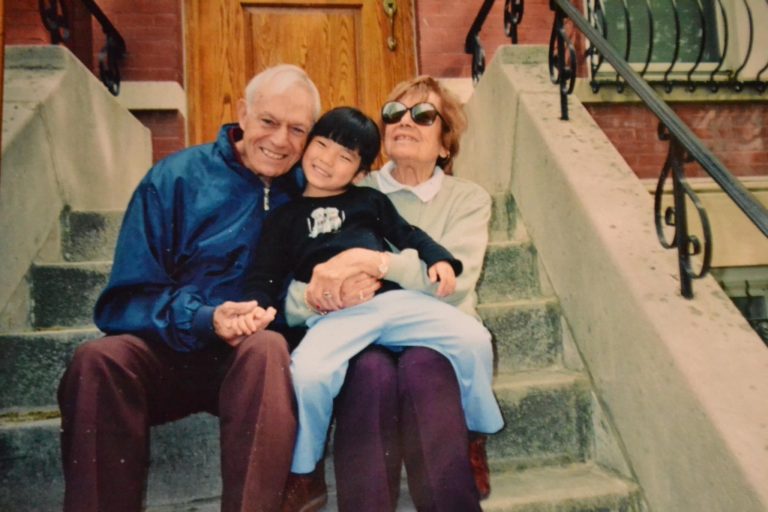
“How long did it take you to adopt?” we would ask. “Is your child sleeping through the night?” “Have you found a good pediatrician?” “Do you want to get together for a playdate?” Suddenly, I had a built-in community.
That’s not to say that Eleni and I didn’t venture out into other parts of our city. On some days, we’d stroll over to our local Korean green grocer to buy fresh fruits and vegetables. I laughed when this man, whose store I’d shopped at for years, took one look at Eleni and smiled at me for the first time — ever. On other days, we’d take the subway to Chinatown, where waiters circled our table in restaurants, giving Eleni the star treatment while presenting her with kid-friendly chopsticks.
As Eleni grew older, she and I ate traditional moon cakes at Autumn Moon festivals. We bundled up in the cold to watch dancing dragons wind their way down frenetic streets in Chinatown during Lunar New Year celebrations. We traveled mostly in white circles but lived in a racially diverse, multi-ethnic city.
The question of race — and what my daughter might experience — didn’t really cross my mind then. As one of many interracial families in our city, why would it?
In retrospect, my perceptions and expectations were perhaps naïve. In her early years, Eleni attended schools and played on sports teams that were largely white but also had kids of all races, including Asian. For the most part, we were insulated as a family from the kinds of comments — and racial slurs — that we might have endured had we lived in a less diverse environment.
The question of race — and what my daughter might experience — didn’t really cross my mind then. As one of many interracial families in our city, why would it?
Still, there were the off-handed remarks and gestures made by children on the playground about the shape of Eleni’s eyes. There was the Asian boy in middle school who referred to me as a “bad Asian mom” because I failed to prepare rice for Lunar New Year one winter. (“My mom’s white,” Eleni shot back, hoping to correct him once and for all.) When Eleni traveled to outlying white suburbs to play with her soccer team, parents on the sidelines would sometimes refer to her by her ethnicity during a game.
“Watch out for that Chinese girl!” a dad would say as Eleni was closing in on the ball or about to make a play. She listened as friends told her they considered her white “just like us,” or better yet, that she was an Oreo, “yellow on the outside, white on the inside.”
But it wasn’t until Eleni was in high school that I began to see my race as part of the equation. One day Eleni came home from school talking about an article she had read called “White Privilege: Unpacking the Invisible Knapsack” by Peggy McIntosh. Not quite understanding how my race afforded me privilege, I read the piece myself and was struck by the notion of how seldom I thought about my whiteness.
For the first time, I considered these questions: Did being white hamper my ability to move freely through the day — my world — without fear or repercussion? Was I often made to feel “othered,” even though I grew up in a multi-generational family of non-native-English speakers?
Was my race a liability — or used against me routinely — in any way? Was I viewed as a perpetual foreigner, or (just as insultingly) a model minority? Was I ever confused with another white person who resembled me vaguely, or told that all white people look alike? In most cases, the answer was no.
At the age of 23, however, my daughter has had a different experience in the world. For four years, Eleni attended a predominantly white liberal arts college, known for its small class size and low professor-to-student ratio. Yet on occasion, a professor would transpose Eleni’s identity with that of another Asian student, calling each by the other’s name, even though they looked nothing alike. (This didn’t occur among white students, incidentally.)
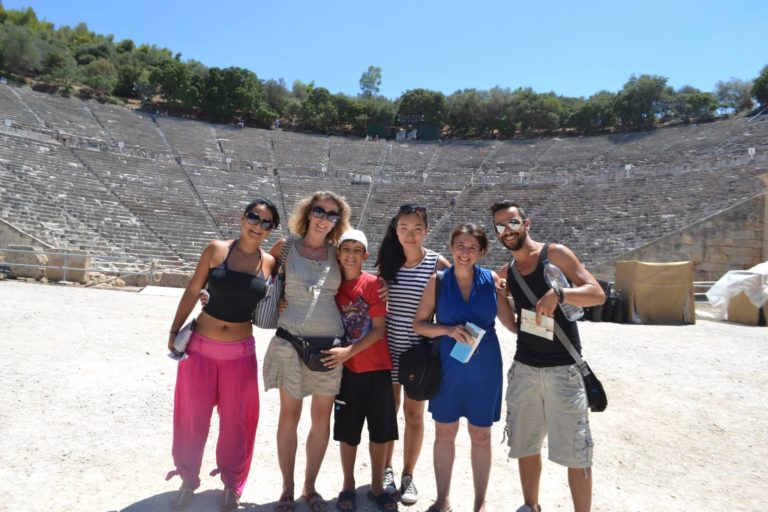
During a semester abroad in Europe, Eleni was sometimes catcalled by men who used the native word for Chinese, or who spoke to her in a mock Chinese dialect. In America, Eleni has been asked questions — by the security guard at the Metropolitan Museum of Art, an Uber driver and others — that imply that she is a perpetual foreigner: “Where are you from? Have long have you lived here?” “Where is your family from? Will you be spending the holidays with ‘your people’?”
Sometimes the questions are meant to be “conversational,” such as when a car service driver near her former college asked — and then proclaimed, “Did you go home for Christmas? It must have been nice to speak your native language and eat the food of your people.” But sometimes being viewed as a “foreigner” has had more serious repercussions.
Earlier this year, COVID-19 was rampant in New York City, and Asian people — both young and old — were screamed at to “Go home!” and blamed for the spread of the coronavirus. Elderly Asians and even some younger ones were brutally attacked while minding their own business on the street or doing a simple errand.
The news in the press and on social media was shocking, disturbing, devastating, and it took a toll on my daughter. Eleni suddenly felt scared to run in the park near our house, a place she’s frequented since childhood. She refused to ride the subway alone, as she had since she was a preteen. She became anxious to leave our home.
One night when the news was particularly bad, Eleni wanted to talk about it. Feeling weary of the never-ending fear of COVID and its restrictions, the general uptick in crime in our city and the horrible attacks on Asians throughout the country, all I could muster was a simple, “I’m so tired, Eleni. Can we talk about this tomorrow?” My daughter looked at me curiously and responded, “You’re tired, Mom? Think about how I feel.”
Due to no virtue or valor of my own, I could walk down the street freely (masked up and socially distanced), go for a walk in the park, run an errand, meet a friend, all without fear of retribution. The same could not be said for Eleni.
And there it was — another moment that made me pause.
Sure, I was having my own bouts of anxiety and fatigue, my own widespread concerns. But the truth was that none of them were connected to my race, my whiteness. Due to no virtue or valor of my own, I could walk down the street freely (masked up and socially distanced), go for a walk in the park, run an errand, meet a friend, all without fear of retribution. The same could not be said for Eleni.
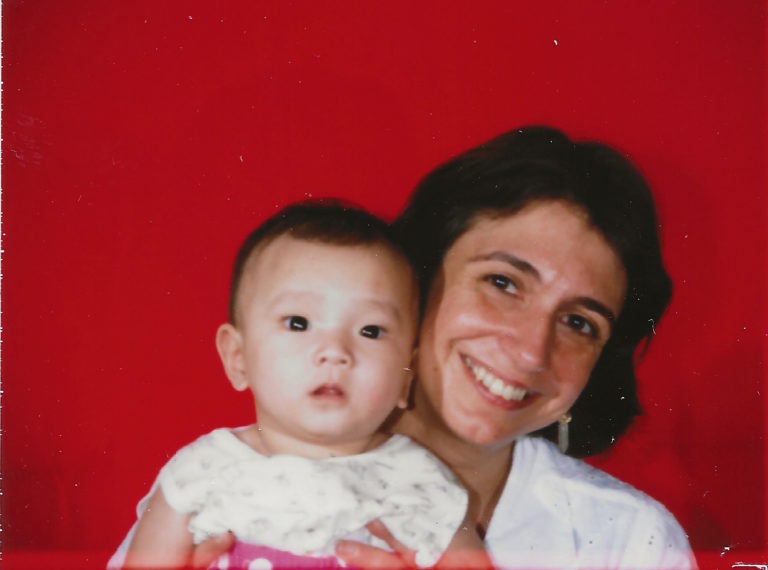
Later that evening, I sat in the dark with my daughter, hoping to comfort her before bed. I thought about the ways in which I could protect her, much as I did when she was a baby, nestled safely in my front pack. I thought about how I could shake up the world and make it better behave. I thought about my love for my daughter, and how helpless I felt then and there. So I did what I’ve done so many times as a mother, in both good times and bad. I put my hand gently on Eleni’s back and told her we’d talk more in the morning. In that moment, in silence, it was the least — and best — I could do.
Laura Broadwell is a writer and editor in Brooklyn, New York. She was previously the editor of “Healthy Kids” magazine and a contributing editor to “Adoptive Families.” Her essay, “Life in Balance,” appears in the collection “Tick Tock: Essays on Becoming a Parent Over 40” (Dottir Press, 2021).
